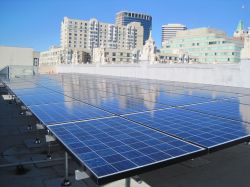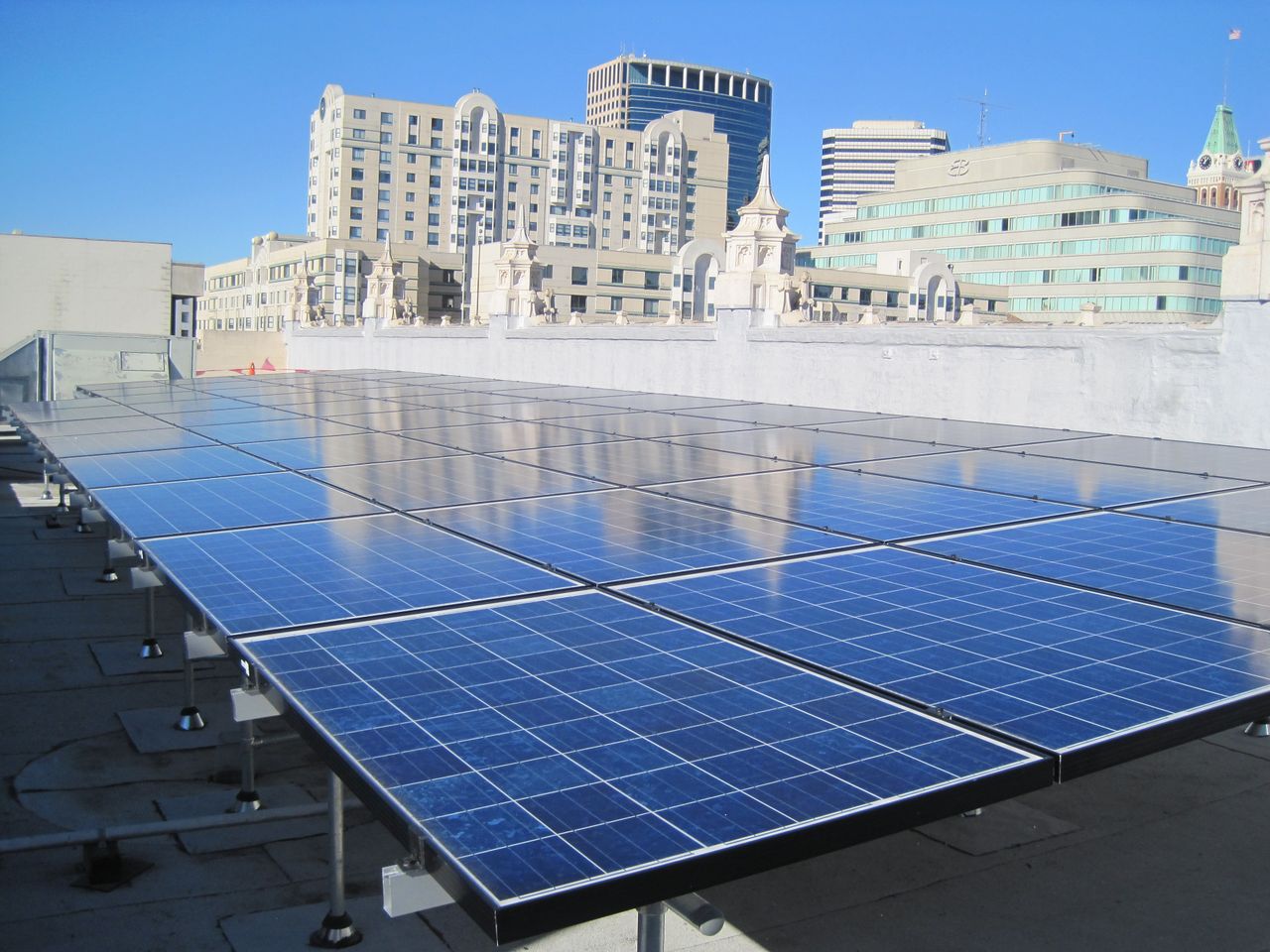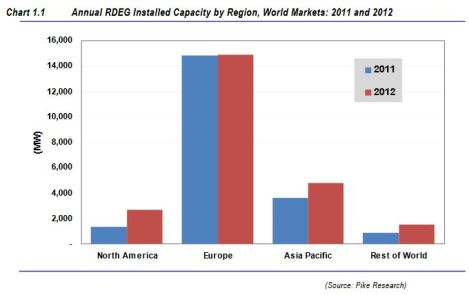
Photo by Solar Mosaic.
In a previous post, I told the story of a discouraging defeat for distributed energy. So I want to follow up to make the point that, despite that one setback, distributed energy is spreading quickly and has enormous potential. (Reminder: Distributed energy is small-scale power sources, usually “behind the meter,” often owned by individuals or companies or community groups instead of utilities, connected by an intelligent grid. Yes, I need a snappier summary.)
One thing that’s frustrated me a little bit about distributed-energy discussions is that, in practice, most of the distributed generation sources in the world are small diesel generators or combined heat and power (CHP) units. Those are interesting in their own right, but what I’m most interested in is distributed renewables.
Luckily, Pike Research has come to my aid with a report on “Renewable Distributed Energy Generation” (RDEG). You can read a short write-up here or a longer executive summary here [PDF], but you’ll need $3,900 (!) to read the full report.
Under the heading of RDEG, the report looks at distributed solar PV, small-scale wind, and stationary fuel cells, though it acknowledges that for the time being, solar PV represents 99 percent of that total. (Fuel cells are big in China, but haven’t taken off elsewhere, and small wind is nascent everywhere.)
There was 20.6 gigawatts of new RDEG installed worldwide in 2011, representing $66.5 billion in revenues. RDEG has been growing at an incredibly speedy rate, but it still represents well under 1 percent of global electricity generating capacity. It’s a tiny, tiny sliver of the big picture for now, though the report says it is “rapidly maturing and expected to play an increasingly important role in meeting the energy challenges of the 21st century,” as evidenced by the fact that it is already cheaper than central generation in several places and circumstances.
So where is all this renewable distributed energy? For now, mostly in Europe:
Build-out was especially vigorous in Europe last year because of the impending scale-back in subsidies (feed-in tariffs) in Italy and Germany, which together hosted 58 percent of new build. But Asia Pacific had its first boom year in 2011, especially in China, and Japan and South Korea are expected to take off in coming years. Things are also picking up in North America, thanks to feed-in tariffs in Ontario and the rising popularity of solar leasing in the U.S. (More on that in a later post.)
As for the future, the report notes several positive trends. Awareness of RDEG is growing, prices for PV are dropping, alternative financing techniques are taking off, third-party ownership and community ownership models are taking off, and the developing world is seeing an explosive rise in demand that centralized development can’t keep up with.
So that’s big picture: for now RDEG is a tiny seed, but it has lots of room to grow and, at the moment, plenty of sunlight and water. My bet is that it will outpace most projections, just like, say, cell phones did, and for many of the same reasons.




